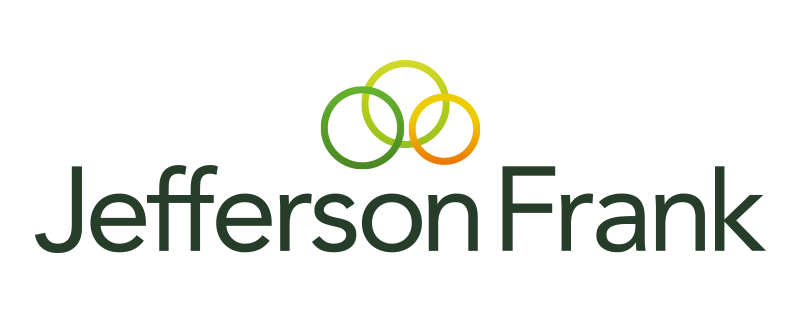
First impressions count.
With the race for talent showing no signs of slowing down across the Amazon Web Services (AWS) community, it’s never been more critical to get your job advert right the first time of asking. You need AWS professionals, and you need them now.
But writing an eye-catching AWS job ad is about more than just showcasing your best side. It’s easy to skip straight to showcasing who you are and why candidates should choose you, but you’re likely to put off a wave of suitable talent in the process.
Often, this is the result of not paying close enough attention to the way you word, phrase, and structure your job description. While not intentional, a combination of unconscious and subconscious bias can result in employers and hiring managers projecting a pre-determined image of the gender, race, background, orientation (and more) of their ideal candidate.
As a result, talent that doesn’t fit this perceived image is unfortunately dissuaded to apply. Not only is this damaging to your organization’s equality, diversity and inclusion (ED&I) commitments, but it’s also furthering existing inequalities across the industry, accelerating the AWS talent shortage, and widening the skills gap. Yikes.
It’s in everybody’s best interest to ensure the AWS community is diverse and equal, and this starts by making everyone feel welcome within it. So, organizations have a duty to lead by example, creating inclusive job postings that encourage talent of all identities and backgrounds to join the ecosystem.
“Diversity and inclusion in the workplace is a journey, not a destination,” recognizes President of Jefferson Frank, Zoë Morris. “As with any other journey, it starts with a single step in the right direction—towards an industry that is fair and diverse, and in which every professional is empowered to do more and be more.”
But right now, not everyone’s getting it right. In fact, the Jefferson Frank Careers and Hiring Guide: AWS Edition found that over a third (34%) of organizations in the community don’t even have an ED&I statement or policy, while nearly 4 in 10 employees (38%) have never received ED&I training in the workplace.
Creating inclusive job descriptions isn’t just a tick box exercise, and candidates will quickly catch on to ads written in this manner. That’s why we’ve compiled 6 tips for writing inclusive job ads, ensuring your company is committing to ED&I in an authentic, impactful, and purposeful way that promotes equal opportunity across the AWS community.
Unmissable insights on hiring AWS talent
6 tips for writing an inclusive AWS job advert
1. Avoid gender-coded language and pronouns
Our Careers and Hiring Guide found a significant disparity in the gender split of the AWS community, with 87% of respondents identifying as male and just 9% as female, and 4% preferring not to disclose it.
With these gender inequalities reflected both in the wider tech industry and STEM sectors, subconscious use of male pronouns and male-weighted language is an unfortunately common occurrence in many tech job descriptions.
To ensure your AWS job ad doesn’t fall prey to these inexcusable errors, avoid using gender-specific pronouns like ‘he/him’ and ‘she/her’, instead opting for either the gender-neutral pronouns ‘they/them’ or the second-person pronoun ‘you’. This one’s easy to spot and easy to get right.
It’s also important to be conscious of using gender-coded language—language that is subtly weighted towards a certain gender.
For example, a BBC report found that jobseekers perceive subtle gender preferences based on the wording of job postings, with words like ‘competitive’, ‘leader’, and ‘dominate’ conveying male stereotypes, and ‘support’, ‘community’, and ‘interpersonal’ portraying a female preference.
This one can be tougher to spot—the use of gender-coded language often isn’t intentional or ill-intended—but its impact is no less severe. So, take the time to analyze your language choices, seeking feedback from your current team and focus groups, or working with dedicated gender de-coding software and tools like
2. Ditch the ambiguous wording
Be conscious of word choices that are ambiguous and have the potential to be misinterpreted.
For example, ‘expert’ or ‘excellent’ lack clarity and are subjective to the candidates’ and employers’ understanding of these terms.
This can deter suitable talent as a result—a highly fluent English-speaking candidate avoids applying on the assumption that their non-native English isn’t ‘excellent’, for instance. Or perhaps a low-income family member doesn’t apply under the assumption they can’t be declared an expert without a $300 AWS certification.
This subjectivity becomes more problematic when discussing accomplishments—the more adjectives you use, the less inclusive your job ads tend to become. Expecting candidates to self-identify with extravagantly positive adjectives like ‘top-level’ and ‘first-rate’ can discourage applicants from cultures and faiths that discourage bragging, and be uninviting to those with sensitive physical or mental health.
Instead, be clear, direct and comprehensive, enabling all candidates to accurately judge whether their skills and experience meet the required bar.
3. Stop the confusing metaphors and titles
The skills gap and the subsequent race for talent mean that job-seeking AWS professionals often have plenty of options open to them. So, you need to catch their attention to stand out from the crowd. And with studies showing some candidates spend as little as 14 seconds reading a job ad, you need to do it fast!
The tech industry is often guilty of putting fun contemporary twists on job titles, ditching traditional role names like Developer or Engineer in favor of unique alternatives such as Ninja and Rockstar.
However, this mishap is one of the biggest enemies of the inclusive job description. For example, a woman of color is unlikely to identify with male-weighted job titles like Software Ninja or Cloud Rockstar at a first glance.
4. List only the essential requirements
Studies have shown that, on average, men apply for jobs when they meet only 60% of the requirements, while women only apply if they meet 100% of the criteria. This difference in mentality is also backed by LinkedIn behavioral data, which finds that women are 16% less likely to apply for a job after viewing it and apply to 20% fewer jobs as a result.
With each ‘must-have’ quality you list, you’re lowering your chance of receiving a female applicant as a result. So, take the time to assess what the real non-negotiables are—these are the skills and experience necessary in the role from day one.
Don’t include qualities or experience that will be acquired throughout a candidate’s induction training, or ‘preferable’ qualities not vital to the role. Especially in highly technical spaces like AWS, requesting additional knowledge and skills beyond the job scope may require candidates to have obtained extensive additional education and training.
As a result, this only minimizes the number of candidates you receive—and in today’s competitive climate, this isn’t an efficient, effective, or equal way to hire an AWS professional.
5. Shout about your perks
As organizations race to outbid one another, workplace perks and benefits are becoming a common feature of AWS job advertisements. And with our Careers and Hiring Guide finding that 85% of AWS professionals consider perks ‘important’ when deciding whether to accept a job offer, it’s little surprise.
But listing any perks associated with your vacancy doesn’t just make your job ad more attractive; it also makes it more inclusive.
By communicating that you offer perks like flexible hours, remote working, childcare provisions, or any other relevant perks at the first point of contact, you’re encouraging candidates who may previously not have applied due to assumed limitations.
For example, flexible hours may encourage a single parent to apply knowing that they’re able to work around parental commitments, while the offer of remote working may incentivize those without the physical or financial ability to commute or relocate.
So, by communicating perks like these from the get-go, candidates who would otherwise be discouraged to apply will be much more likely to submit their application. This allows you to benefit from a whole pool of untapped talent, and unlock all the benefits that come with it as a result.
6. Always be transparent
For your company’s ED&I commitments to be truly successful, they need to be authentic. You need to walk the walk, not just talk the talk.
If you have an ED&I policy, consider stating it in your job advert, and if not, consider detailing the ways in which your organization is committed to ED&I initiatives.
The trick here is not to simply say that you’re an inclusive employer, but to demonstrate to candidates how you’ve taken the steps to ensure fairer opportunity for all. This will ensure that candidates from all backgrounds feel welcomed with open arms, resulting in more exciting hire opportunities with each ad you post, and bringing more fresh, diverse perspectives to the table.
Here at Jefferson Frank, we’re dedicated to helping organizations harness the power of AWS while promoting ED&I in the tech space every step of the way.
We’re committed to increasing representation, and creating an equal and accessible place to work, grow, and succeed for all – and we need your help in getting there. To diversify your talent pipeline and ensure your next hire is found in a fair and inclusive way, submit your vacancy today, and within 48 hours we’ll match you with a shortlist of hand-picked AWS talent.


